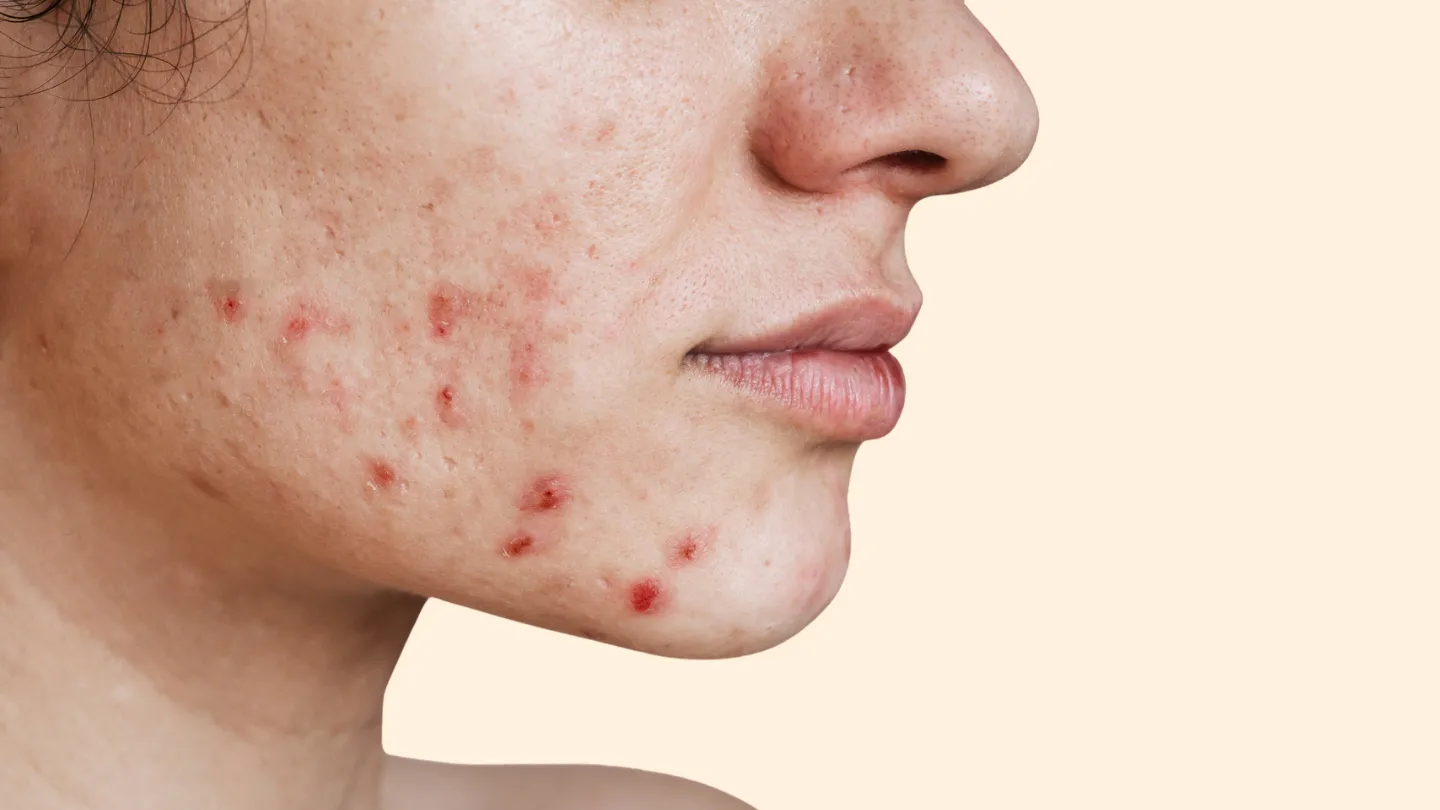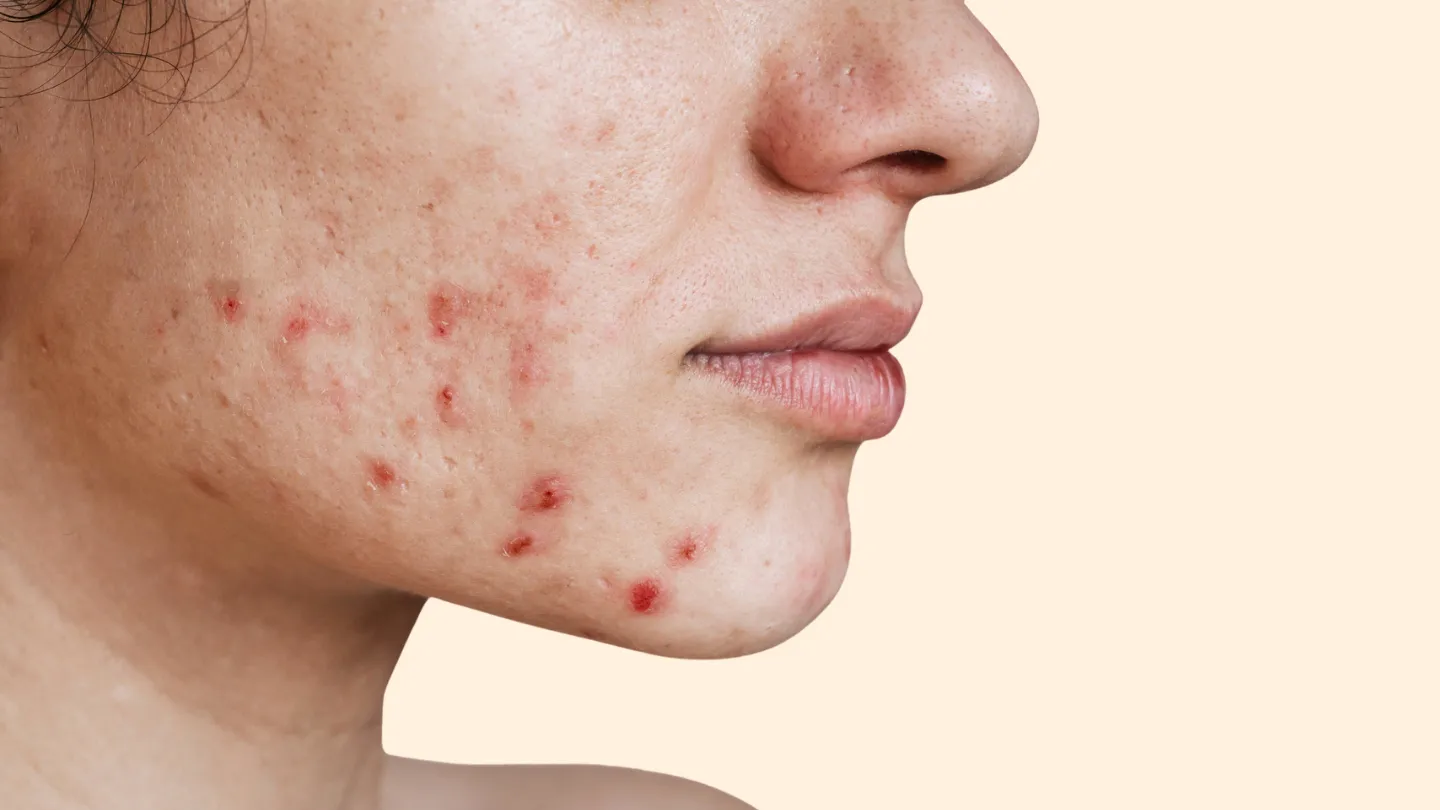Understanding Teenage Skin and Acne
During puberty, rising hormone levels signal the sebaceous glands in the skin to produce more sebum, an oily substance that lubricates and protects the skin. However, excess sebum can clog pores and cause breakouts. Teenage acne is extremely common, affecting over 80% of adolescents. Still, acne can negatively impact self-esteem if left unchecked.
Common Causes of Teenage Breakouts
Acne in the teenage years is triggered by:
- Hormonal fluctuations during puberty
- Excess sebum production
- Pores clogged by dead skin cells and debris
- Bacteria growth inside clogged pores
- Stress, poor diet, lack of sleep
Types of Acne in Teenagers
Teens experience a range of mild to severe breakout types:
- Whiteheads - closed, clogged pores
- Blackheads - open, clogged pores exposing debris
- Papules - small, tender pink bumps
- Pustules - pus-filled pimples
- Nodules - large, solid, painful lumps under skin
- Cystic acne - painful pimples filled with pus deep in skin
Best Skincare Ingredients for Teen Acne
Dermatologist-recommended acne treatments contain active ingredients like:
Benzoyl Peroxide
Benzoyl peroxide kills acne-causing bacteria on contact while removing excess oil and dead skin cells clogging pores. It works best at concentrations of 2.5% to 10%.
Salicylic Acid
Salicylic acid is an oil-soluble exfoliant that penetrates deeply into clogged pores to dissolve dead skin cell debris to prevent breakouts. It works well combined with benzoyl peroxide.
Retinoids
Retinoids like adapalene and tretinoin normalize excessive skin cell turnover and unclog congested pores. However, they require an adjustment period to avoid irritation when starting out.
Tea Tree Oil and Niacinamide
Tea tree oil reduces acne-causing bacteria with antimicrobial properties. Niacinamide fights inflammation and calms irritation while balancing sebum activity making them ideal complementary ingredients.
Tips for an Effective Teen Skin Care Routine
1. Cleanse Twice Daily
Use a gentle, creamy facial cleanser without harsh detergents to remove dirt, makeup and excess oil without stripping skin.
2. Use Acne-Fighting Ingredients
Spot treat outbreaks with acne creams containing benzoyl peroxide or salicylic acid. Use all-over thin layer of retinoids at nighttime. Always follow directions to avoid dryness or irritation.
3. Moisturize Properly
Contrary to popular belief, even oily and acne-prone complexions need moisture. Look for lightweight, oil-free hydrators containing hyaluronic acid and ceramides after cleansing and spot treatments.
4. Always Use Sunscreen
UV exposure can darken acne marks and worsen breakouts. Use oil-free SPF 30 or higher sunscreen on face whenever going outside during daylight hours.
5. Consider Professional Extractions
Resist picking pimples to avoid scars and infection. Instead visit dermatologists who use sterile techniques to extract blackheads and deep congestion if home treatments fail.
6. Try Over-the-Counter Acne Patches
These transparent dots contain acne fighters to speed up healing overnight. They protect picked blemishes from infection while pulling out impurities.
Other Lifestyle Adjustments
Follow a Skin-Friendly Diet
While no diet has been clinically proven to cure acne, anecdotal evidence links milk products and foods with high glycemic index to breakouts. Nutrient deficiencies may also aggravate acne.
Reduce Stress Levels
Anxiety stimulates stress hormones like cortisol which trigger excess oil production. Make time for relaxing self-care activities like yoga, massage or meditation.
Get Enough Sleep
Not getting your 7-9 hours interferes with hormonal balance, immune health and skin recovery. Maintain a regular sleep-wake cycle; avoid digital devices before bed.
Professional Acne Treatments
For moderate to severe acne unresponsive to over-the-counter regimen, visit board-certified dermatologists. Custom prescription therapies include:
Oral or Topical Antibiotics
Oral antibiotics like Doxycycline disable acne-causing bacteria from the inside out, preventing progression of inflamed breakouts. Topical antibiotics treat surface bacteria. Use produces antibiotic resistance over time.
Prescription Retinoids
Stronger retinoids like Tazorac or Retin-A Micro stimulate quicker cell turnover to keep pores clear. Use under medical supervision due to side effects.
Oral Contraceptives
Birth control pills containing estrogen and progesterone balance hormones, lowering androgen levels linked to acne. Not suitable for all teens.
Corticosteroid Injections
Hard, painful cysts and nodules benefit from targeted corticosteroid shots reducing size, swelling and inflammation.
Light and Laser Therapy
Devices using blue light waves kill acne bacteria without dryness or irritation. Laser genesis minimizes red marks and scars while smoothing skin texture.
Chemical Peels and Microdermabrasion
In-office procedures remove outer skin layers so fresh skin regenerates sebum-clogged pores. Use monthly treatments for preventative maintenance between breakouts.
The Best Moisturizers for Oily and Acne-Prone Teen Skin
Many teens shy away from using moisturizer, worrying it will exacerbate acne and shine. But even congestion-prone complexions need hydration which plays a pivotal role in healing and protecting skin long-term. Look for lightweight gels or fluids labeled non-comedogenic, oil-free and non-acnegenic. Key ingredients to include are:
- Hyaluronic acid
- Plant-based squalane
- Amino acid complexes
- Soothing botanicals like green tea, aloe, chamomile
- Mattifying silica
- Skin-strengthening niacinamide
- Reparative peptides
- Anti-inflammatory zinc
Bonus points if the formula offers broad spectrum SPF protection!
Here are the top five moisturizer picks for acne-prone teenage skin from dermatologists and beauty experts:
1. Cetaphil Daily Facial Moisturizer with SPF 50+
Clinically shown to hydrate while defending against acne bacteria plus UVA/UVB rays for well-rounded protection.
2. Neutrogena Hydro Boost Gel Cream Extra Dry Skin
Lightweight hyaluronic acid formula instantly quenches dehydrated skin for soft,smooth texture without clogged pores
FAQs
What causes acne in teenagers?
Acne in the teenage years is triggered by hormonal fluctuations during puberty, excess sebum production, clogged pores, bacteria growth in pores, stress, poor diet, and lack of sleep.
Should teenagers with oily skin use moisturizer?
Yes, even oily and acne-prone teen skin needs hydration and moisture from lightweight gels or fluids labeled non-comedogenic, oil-free and non-acnegenic. Key hydrating ingredients to look for are hyaluronic acid, plant-based squalane, amino acid complexes and more.
How can teenagers get rid of acne fast?
Following tips like cleansing twice daily with acne cleansers, using acne-fighting ingredients like benzoyl peroxide and salicylic acid, moisturizing properly, wearing SPF, and trying acne patches, teens can clear up mild to moderate breakouts faster. Severe acne requires seeing a dermatologist.
What vitamins help clear teenage acne?
Vitamin A/retinoids, zinc, Vitamin D, Vitamin E, Vitamin C and omega-3 supplements taken orally or used topically can improve acne by supporting skin cell regeneration and reducing inflammation.
Disclaimer: This article is for informational purposes only and does not constitute medical advice. Always consult with a healthcare professional before starting any new treatment regimen.
Related Coverage
Does fasting help with acne? Discover the science behind the relationship between fasting and acne, potential benefits, drawbacks, and best practices for incorporating fasting into your skin care routine....
Discover the most effective acne body washes for treating and preventing pimples on your chest, back, and shoulders. Discusses ingredients that clear body acne....
Does fasting cause acne breakouts? Intermittent fasting may impact hormones and lead to more pimples. Get tips to prevent acne flares during fasting....
Learn what causes bacne, explore treatment options like benzoyl peroxide and laser therapy, and discover concealing techniques for hiding back acne....
Some speculate the herb ashwagandha may lead to acne breakouts due to hormonal effects, but research hasn't found a clear link. Tips if experiencing acne on ashwagandha....
Frustrated by recurring major breakouts and cystic acne? Get clues to the underlying causes of stubborn pimples. Discover professional treatment options and at-home care tips to clear and prevent....
Scarring on the butt from acne, injuries, or surgery can be upsetting. But treatments like silicone sheeting, steroid injections, and laser therapy can improve their appearance....
Skin popping refers to self-harm by intentionally damaging one's skin for photos shared online. This behavior is driven by trauma, mental illness and the quest for connection....
Learn the key characteristics of a smooth, healthy natural nail surface. Discover what causes abnormalities and when to see a doctor for nail surface changes....
Find out if sugary sodas can contribute to acne breakouts in adults. Get research overview and dermatologist tips for treating acne internally and externally....






